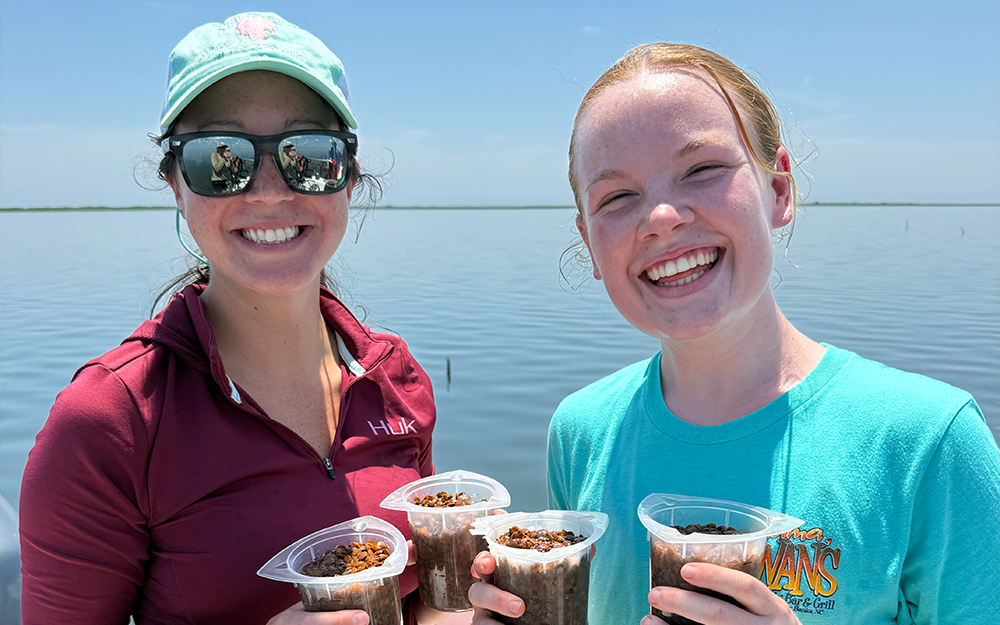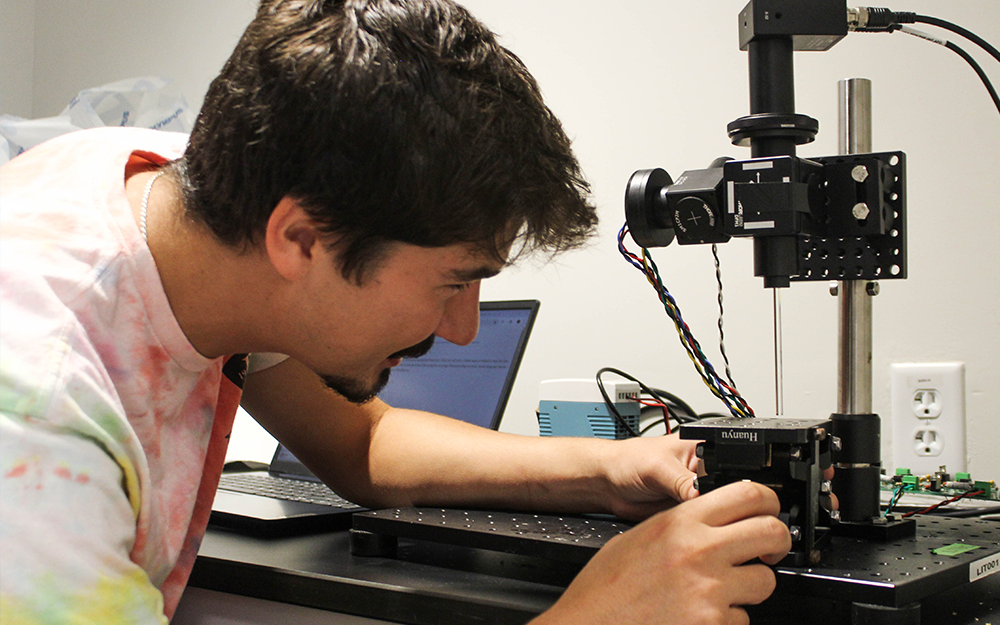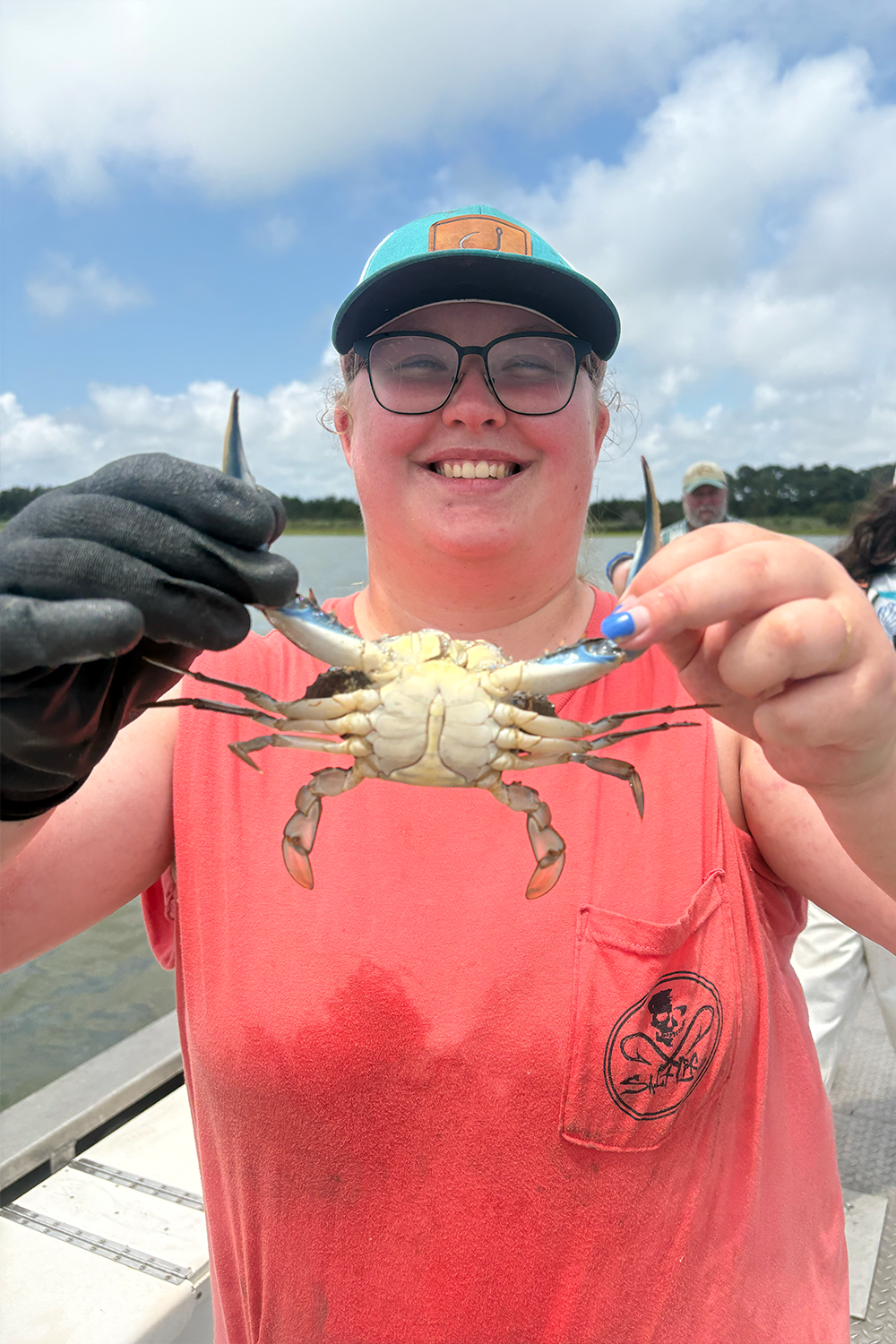Eastern Shore interns thrive in summer program dedicated to local students
 There was a palpable sense of excitement on a recent, sunny day in Wachapreague, VA, as friends, families, community members, donors and other supporters gathered at William & Mary’s Batten School & VIMS’ Eastern Shore Lab (ESL). The enthusiastic group had assembled to watch presentations by the most recent cohort of summer interns, and the interns delivered in sophisticated fashion.
There was a palpable sense of excitement on a recent, sunny day in Wachapreague, VA, as friends, families, community members, donors and other supporters gathered at William & Mary’s Batten School & VIMS’ Eastern Shore Lab (ESL). The enthusiastic group had assembled to watch presentations by the most recent cohort of summer interns, and the interns delivered in sophisticated fashion.

“They were first-class,” said Tom Young, a longtime Batten School & VIMS advocate, former director of NASA’s Goddard Space Flight Center and retired executive vice president at Lockheed Martin. “I've been to several of the internship presentations, and they seem to get better each year.”
Every summer, the Batten School & VIMS accept a handful of highly exceptional students to the Bonnie Sue Internship Program. These high school and college interns assist ESL faculty and staff with ongoing research projects, culminating in mid-August with a formal presentation of project results.
Colin Ford, a rising junior at Bridgewater College, researched marine biofilms under the mentorship of ESL Director Richard Snyder. “You get a lot of experience doing different things,” he said. “I don’t think one week was the same as the last, and you work under a lot of very talented people who are all here to help make sure you’re learning.”
The Bonnie Sue Internship Program is unique in that it offers opportunities exclusively to student residents of the Accomack and Northampton Counties on the Eastern Shore of Virginia. Since the endowment fund was established in 2010, the program has welcomed approximately five local interns each summer.
“It's about giving back to the community here,” said ESL Assistant Director Stacy Krueger-Hadfield. “We provide interns with training they can use in local jobs, if they so desire. That's really unique, especially in a rural area. Former interns have returned to the region to work in K-12 education and the aquaculture industry.”
 “The Eastern Shore is unique, but it’s also a historically underprivileged area,” agreed William Justice, a rising senior at Radford University who studied algae photophysiology alongside Krueger-Hadfield. “It’s fantastic that there are donors who care so much about education and the environment that they would give their own money to fund the ESL and this local internship.”
“The Eastern Shore is unique, but it’s also a historically underprivileged area,” agreed William Justice, a rising senior at Radford University who studied algae photophysiology alongside Krueger-Hadfield. “It’s fantastic that there are donors who care so much about education and the environment that they would give their own money to fund the ESL and this local internship.”
Students also attest that the program isn’t merely a resume builder, but a critical influence on their career aspirations.
“I wish I had known about this when I was even younger, because it has really shaped what I want to do in the future,” said Skylar Wennegren, a senior at Old Dominion University who studied nektons with Senior Marine Scientist P.G. Ross. “The problem-solving was so fun and engaging; it helped me realize that the future I envision for myself is in ecology.”
Kendyl Farrell, a rising junior at Virginia Tech, returned for her second year as an intern; this time working on scallop aquaculture and restoration with Senior Research Specialists Darian Kelley and Reba Turner-Smith. “I loved everything about my experience last year,” she said. “I’m very grateful to be a part of the important work here. I think it's so important and interesting to know what is happening in our local environment.”
 The Bonnie Sue Internship Program is made possible by the generous gifts of passionate supporters. Private philanthropy empowers not only the internship program, but also the essential research that the interns do alongside ESL scientists.
The Bonnie Sue Internship Program is made possible by the generous gifts of passionate supporters. Private philanthropy empowers not only the internship program, but also the essential research that the interns do alongside ESL scientists.
“Many of the things we pursue do not lend themselves to the traditional federal funding cycle, because long-term monitoring is just that, while federal funding is typically time-limited,” said Krueger-Hadfield. “We do both empirical research and applied work, including providing advice to industry. That cannot be done without donor support. It’s integral to the ecological monitoring program and the surveys that provide interns with hands-on experiences. They're not just watching us; the interns are full participants.”
Young reiterated that the work done by the Batten School & VIMS’ ESL is critical. “VIMS is a great asset for the commonwealth and beyond,” he said. “And the Eastern Shore Lab has some incredible facilities and a bright future. With ongoing and additional support that provides more resources and capabilities, we can maximize its potential.”
If you’d like to contribute to the Bonnie Sue Internship Program or to the VIMS ESL, consider making a gift to the Bonnie Sue Internship Program Fund (4262) or the Eastern Shore Laboratory (3525).

